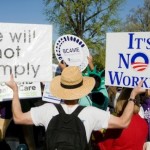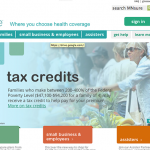Obamacare 2017 Premium Hikes 25 Percent. What Next?
 The Administration has confessed the average 2017 Obamacare premium hike for the benchmark (second-lowest cost) Silver plan will be 25 percent. (Back in June, it looked like the hike would be 16 percent.)
The Administration has confessed the average 2017 Obamacare premium hike for the benchmark (second-lowest cost) Silver plan will be 25 percent. (Back in June, it looked like the hike would be 16 percent.)
Don’t worry, says the Administration, tax credits will ensure beneficiaries only pay a fraction of their premiums. It is true, very few people would buy Obamacare plans without the tax credits the Administration cheers. However, that is not a sign the plans are “affordable,” but only that taxpayers are bearing more of the burden.
Nor do the tax credits actually prevent people from sticker shock. In fact, the design of the tax credits usually makes the net premium hike higher than the gross premium hike. For example, the average premium hike next year in California will be 13.2 percent, but a 56-year old woman in Los Angeles just learned her premium will jump 57 percent next year.






